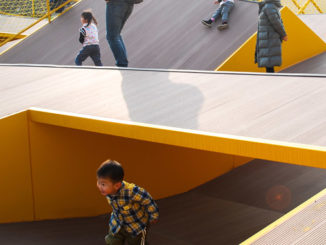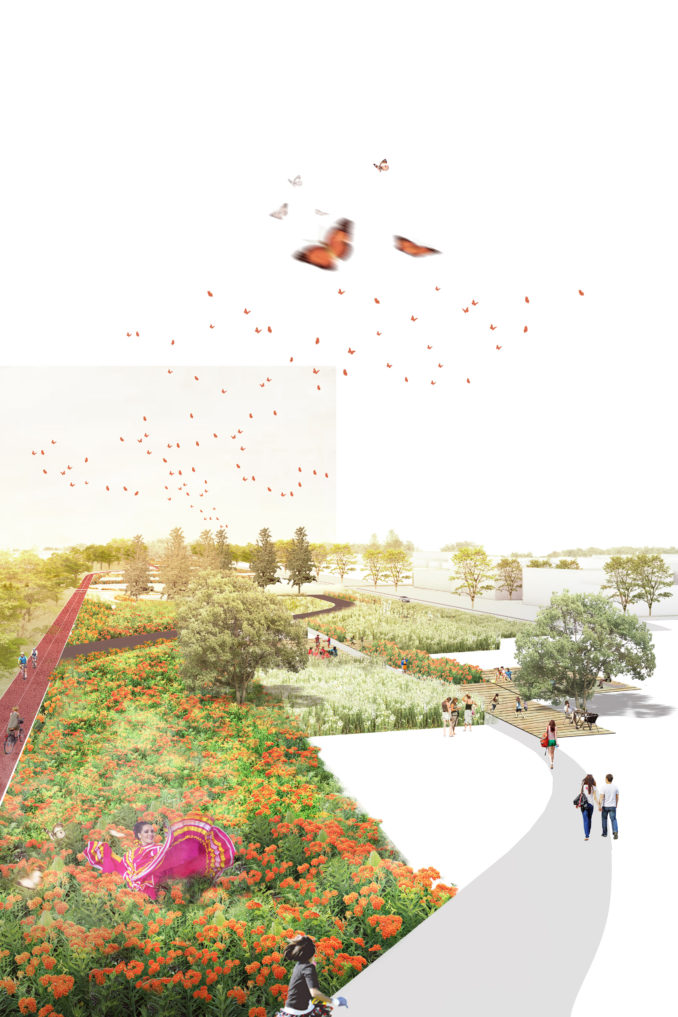
Migration is beautiful, both for nonhumans and humans. Monarch is the only species of butterflies known to make an annual two-way migration. The number of the monarch has been decreasing dramatically for habitat losses along the journey. Meanwhile, like many towns in the Midwest of the United States, Latinx immigrants, often appealed by the local industry developments, are reshaping Perry’s future. Inspired by the parallel of monarch butterflies’ migration trajectory and the Latinxs’, the project aims to create visibility and a sense of place for “the migrants” in Perry, Iowa.
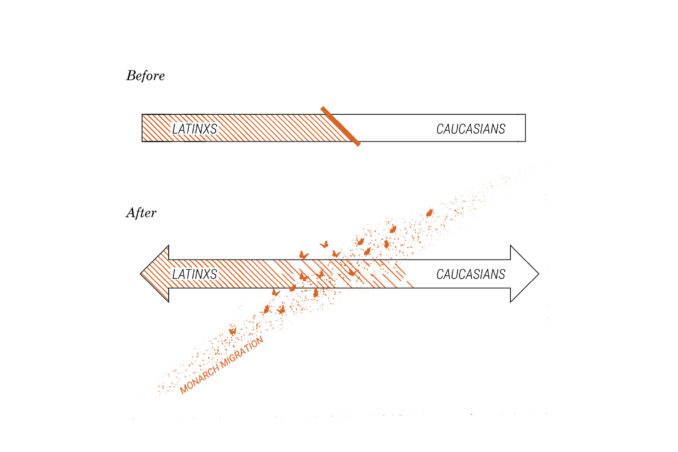
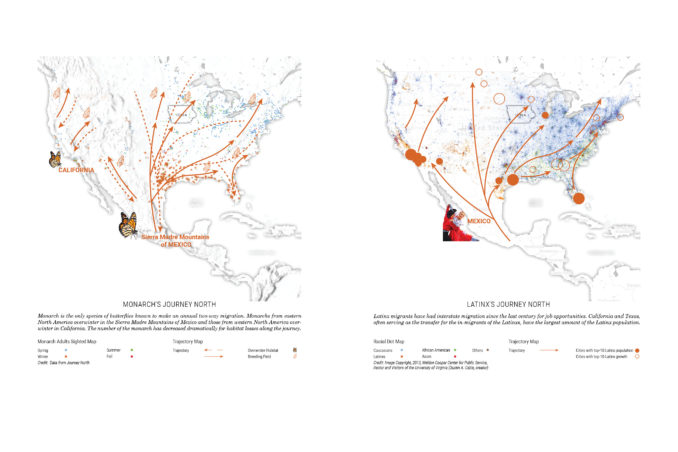

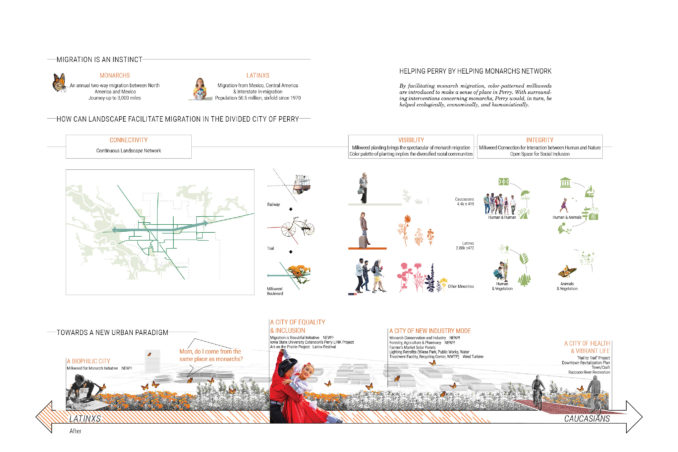
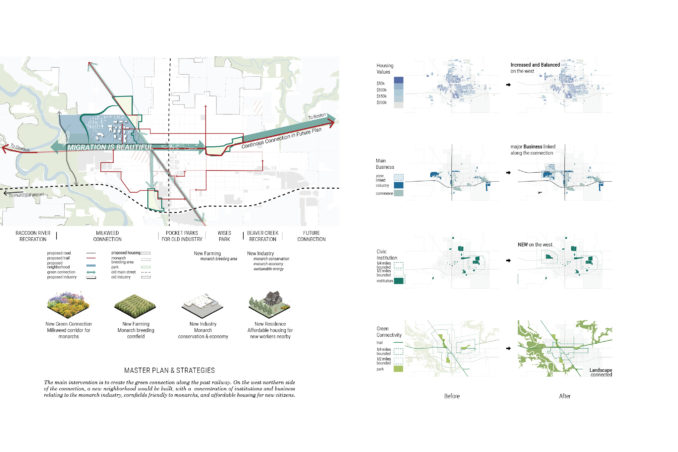
Help Perry by helping monarchs. Monarchs feed exclusively on milkweeds. By introducing the milkweed boulevard along the historical railway, monarch migration would be facilitated by this connective new habitat. Monarchs’ landscape would, in turn, help revitalize the ecology, agriculture, industry, and culture of the city of Perry.
The city’s primary intervention is to create the milkweed boulevard along the past railway, which is now developed as Raccoon River Valley Trail. On the west-northern side of the connection, an innovative neighborhood would be built, with a concentration of institutions and business relating to the monarch industry, cornfields, and affordable housing for incoming citizens.
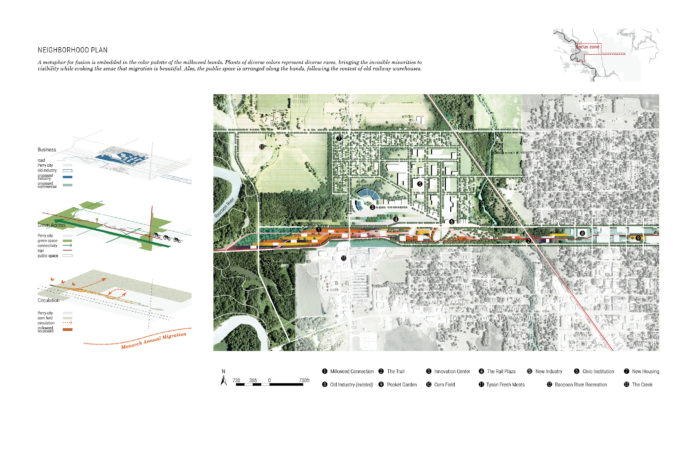
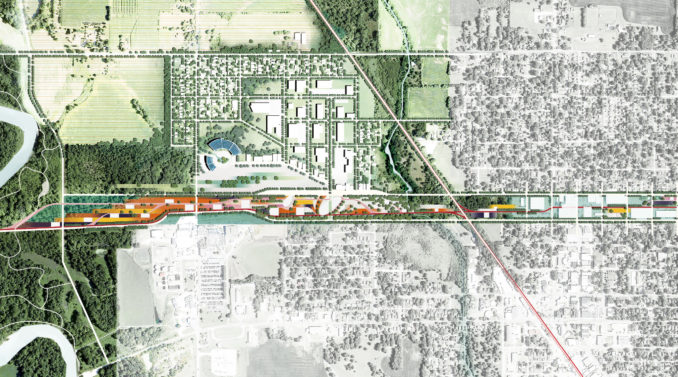
A metaphor for fusion and visibility is embedded in the color palette of the planting bands at the milkweed boulevard. Plants of diverse colors represent diverse ethnic identities, bringing the invisible minorities to visibility. Also, the public space is programmed to promote communications and gatherings, following the imprints of old railway warehouses.
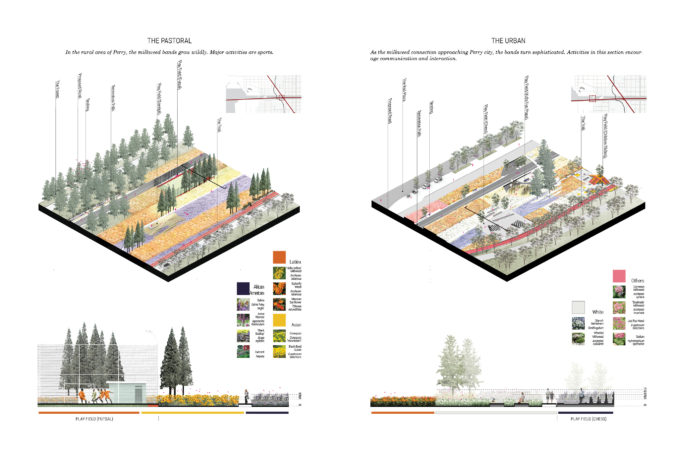
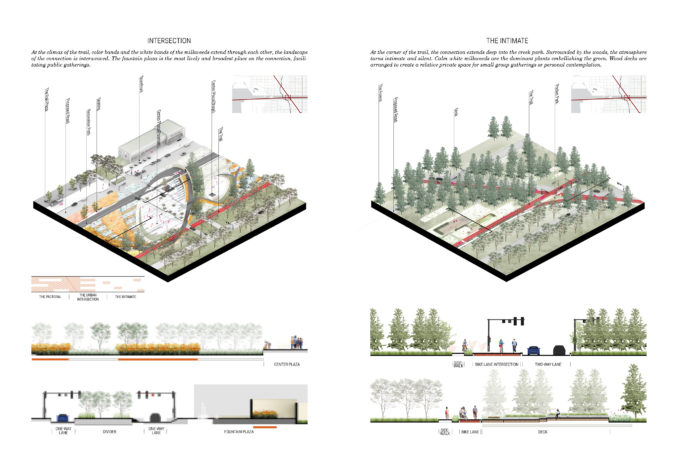
The atmosphere along the milkweed boulevard echoes its cultural identity and spatial locations, ranging from the pastoral, the urban, the intersection to the intimate. In the rural area of Perry, the milkweed bands are depicted as pastoral. Primary activities are open and energetic, such as Fussball. Approaching the urban area of Perry city, the tune turns sophisticated. Activities in this transect encourage communication and interactions. At the intersection, the climax of the trail, varicolored bands, and the pure bands of the milkweeds extend through each other; the landscape is interweaved. The central fountain plaza facilitates the liveliest public gatherings here. At the final transect of the boulevard, the connection extends deep into a creek park. Surrounded by the woods, the atmosphere turns intimate and silent. Calm white milkweeds are the dominant plants embellishing the green. Wood decks and pocket gardens create a relatively private space for small group gatherings or personal contemplation.
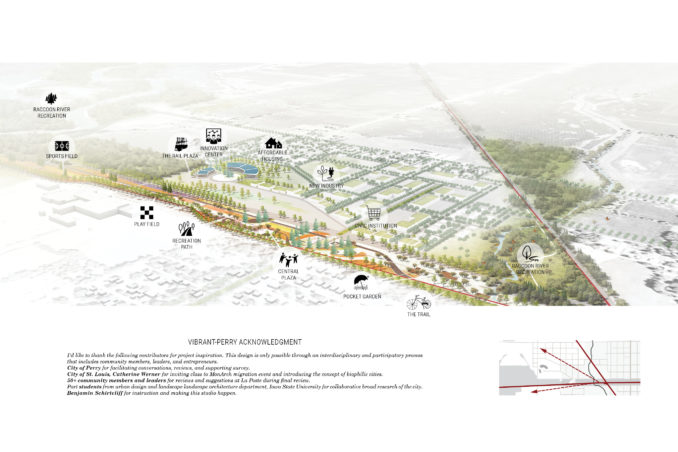
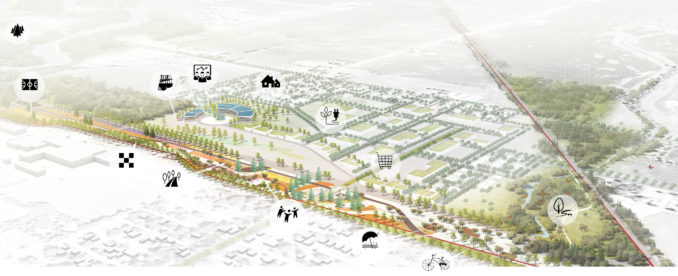
In this way, the monarch landscape is rendered as a dissolvent of social and natural dilemma. The west of Perry is instilled with innovative industry and biophilic living environments. The divided urban landscape of Perry would be reconnected, conveying the philosophy of migration.
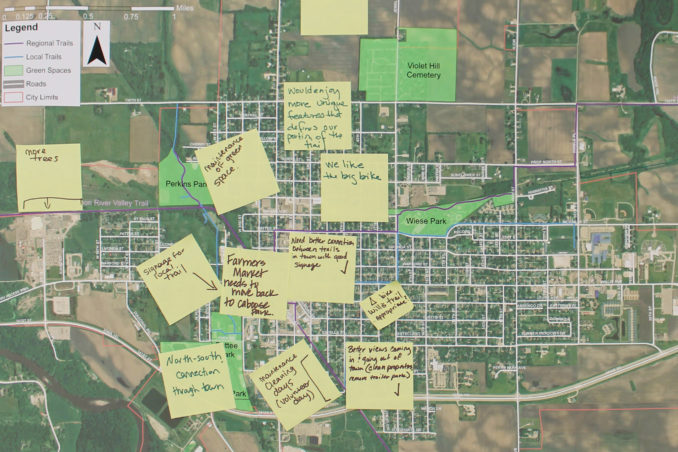
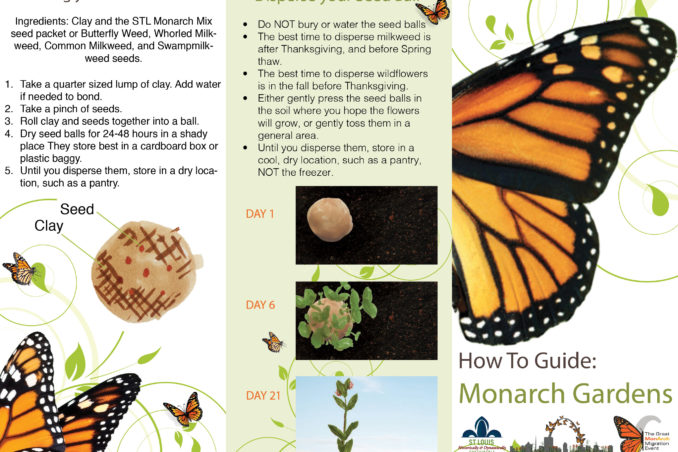
This design is only possible through an interdisciplinary and participatory process that includes community members, leaders, and entrepreneurs. I’d like to thank the following:
- City of Perry for facilitating conversations, reviews, and supporting survey.
- City of St. Louis, Catherine Werner for inviting class to MonArch migration event and introducing the concept of biophilic cities.
- 50+ community members and leaders for reviews and suggestions at La Poste during final review.
- Part students from urban design and landscape architecture department, Iowa State University for collaborative broad research of the city of Perry.
- Benjamin Schirtcliff for instruction and making this studio happen.
Migration is beautiful: biophilic boulevard
Student: Yuxin Yang, Harvard Graduate School of Design
Supervisor: Benjamin Shirtcliff, Iowa State University


